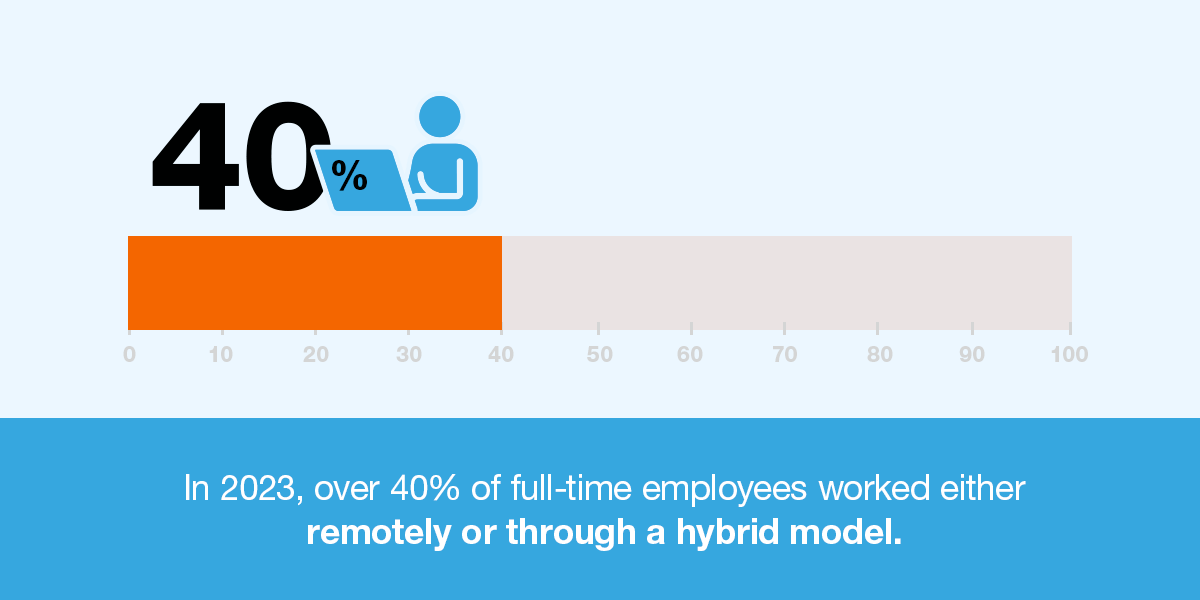
Table of Contents
- The Evolution of Workforce Management Software
- Key Industry Trends in Workforce Management Systems
- Stay Ahead With PenguinData
Workforce management has come a long way from the days of just scheduling employees at the right times. Today’s software is highly sophisticated, with a long list of capabilities that only grows as technology improves. Evolving workplaces and technology solutions have ushered in several trends directing the future of workforce management. As we look to the future, the latest workforce management trends can offer some insight into where the industry is headed and what technology we have to look forward to.
The Evolution of Workforce Management Software
Before making predictions, let’s dig into how previous trends have shaped workforce management software. Workforce management began as a manual process. Its primary goal was to streamline the tasks associated with scheduling, attendance and timesheets. Old mechanical punch clocks, for instance, helped with workforce management by printing the time the employee punched in on a piece of paper. They saved business owners time and money on manual time tracking.
Businesses used workforce management technology to optimize scheduling practices for more productivity and efficiency. Automation moved quickly once software was in play, but for a long time, the focus remained on time and attendance tracking. In the last few decades, the software has become much more comprehensive, with workforce management systems covering areas like:
- Staff performance
- Training
- Forecasting
- Employee engagement
Employee engagement has become a core component of workforce management. With numerous studies connecting employee engagement to performance outcomes like profitability, productivity, turnover and safety incidents, supporting a more engaged workforce can be highly beneficial.
Another major evolution in the workforce management market was cloud-based software and the Software as a Service (SaaS) industry. SaaS changed the entire distribution system, greatly reducing the barrier to entry for many smaller and mid-sized businesses. Instead of paying for expensive on-site hardware and hiring in-house experts, these companies could access secure, high-performing software with just an internet connection.
Today’s businesses leverage workforce management solutions to achieve wide-reaching goals, from working more efficiently to improving safety.
Key Industry Trends in Workforce Management Systems
Any condition that affects the workforce affects the workforce management industry. Even the need for workforce management solutions is growing thanks to new technologies, fewer barriers to entry and an increasingly complex labor force. Analysts predict a compounded annual growth rate (CAGR) of 9.5% between 2023 and 2031 for the workforce management software industry — a jump from $8.6 billion to $15.77 billion.
Here are some of the biggest drivers and future trends for workforce management systems:
The Rise of Remote Work
In 2023, over 40% of full-time employees worked either remotely or through a hybrid model. Naturally, this shift has created a significant change in how businesses manage their workforce. It affects aspects like:
- Scheduling demands: Workforce management software must accommodate diverse schedules and ensure appropriate coverage, such as maintaining a specific number of on-site workers while allowing some hybrid employees.
- Work-life balance: With optimized scheduling and more flexibility, businesses can help employees enjoy healthier relationships with their workplaces.
- Hiring options: Remote workers allow many organizations to expand their hiring pools, and software must follow suit. For example, applicant portals can improve the experience for job seekers, attracting more qualified candidates.
- Off-premise software access: Modern workforce software can allow workers to manage their timesheets and perform self-service tasks like making time-off requests. Having these capabilities from any location supports a remote or hybrid workforce.
Contract work is also in demand, with many companies taking advantage of the flexibility and simplicity of working with freelancers. They often lean on workforce management systems to organize contract work and manage teams alongside in-house employees.

Increased Demand for Data Analysis
Today’s businesses have access to more data than ever before, and workforce management software has made it much easier to access and understand. The SaaS model allows even small and mid-sized businesses to access sophisticated resources without a significant capital investment. They can collect data from many places, such as on-premise computers, employee-owned mobile devices and fleet tracking systems. Today’s systems organize huge amounts of information in central locations. As more businesses seek to leverage this data, they look toward analytics to improve decision-making.
Modern workforce management software connects data to reporting and analysis solutions, which can unlock new insights and help businesses find new competitive advantages. Artificial intelligence (AI) and machine learning (ML) have made great strides, and linking workforce management software to business intelligence systems can allow these new technologies to make the most of workforce data.
Real-time access to data is also gaining speed in workforce management. When you need to make decisions about your team, up-to-date information on employee activities, such as location or status, enables more accurate and effective choices. Workforce management software now meets the demand for real-time data analysis through dashboards, on-demand reports and other technologies.
More Emphasis on Employee Satisfaction and Engagement
Only about half of workers in the United States are extremely or very satisfied with their jobs. After trends like the Great Resignation and “quiet quitting,” staying on top of worker happiness is crucial for employee retention. Workforce management increasingly focuses on issues like burnout, engagement, motivation and work-life balance.
Today’s workforce is especially diverse and spans five generations, so software must adapt to these characteristics, particularly regarding age. For instance, a user-friendly interface can help appeal to varying levels of technical skill.
Some ways workforce management software has developed to meet these needs include:
- Analyzing business data to help teams identify areas for improvement.
- Providing a better employee experience through flexible, self-service portals and mobile access.
- Offering different options to appeal to a diverse workforce.
- Managing upskilling, re-skilling and certification efforts to address evolving technologies.
- Personalizing career development to individual employee needs.
Greater Need for Flexibility
Modern organizations must adapt to changes that range from emerging tools and cybersecurity threats to new business strategies. The workforce management industry heavily focuses on cloud-based, SaaS solutions, which give businesses the flexibility to adapt to changing situations. Modular systems allow you to choose relevant features based on your current needs and configure the system to your unique workflow for maximum efficiency.
Flexible software architectures and ongoing updates further support agility by adapting to industry regulations. Depending on your field, these requirements can change quickly, so easily updated software ensures you can meet demands. Workforce management software can also adapt to cybersecurity developments, like new threats.
Flexible, agile software is essential for any organization looking to maintain a competitive advantage.
Stay Ahead With PenguinData
The workforce management market has changed drastically due to influences like new technologies and employee sentiments. Today’s software providers have responded to these influences with powerful tools built for success in an evolving business environment.
At PenguinData, we keep a pulse on the industry and enable flexibility through an agile workforce management solution. Our cloud-based Workforce Management Modules allow field service businesses to access a suite of resources designed for modern teams. See how PenguinData can transform your approach to workforce management today.

